The San Andreas fog is irrelevant – the setting itself is the star of the GTA Trilogy
Chaotic launch aside, the GTA Trilogy’s San Andreas is a masterstroke – but its downside is inevitable
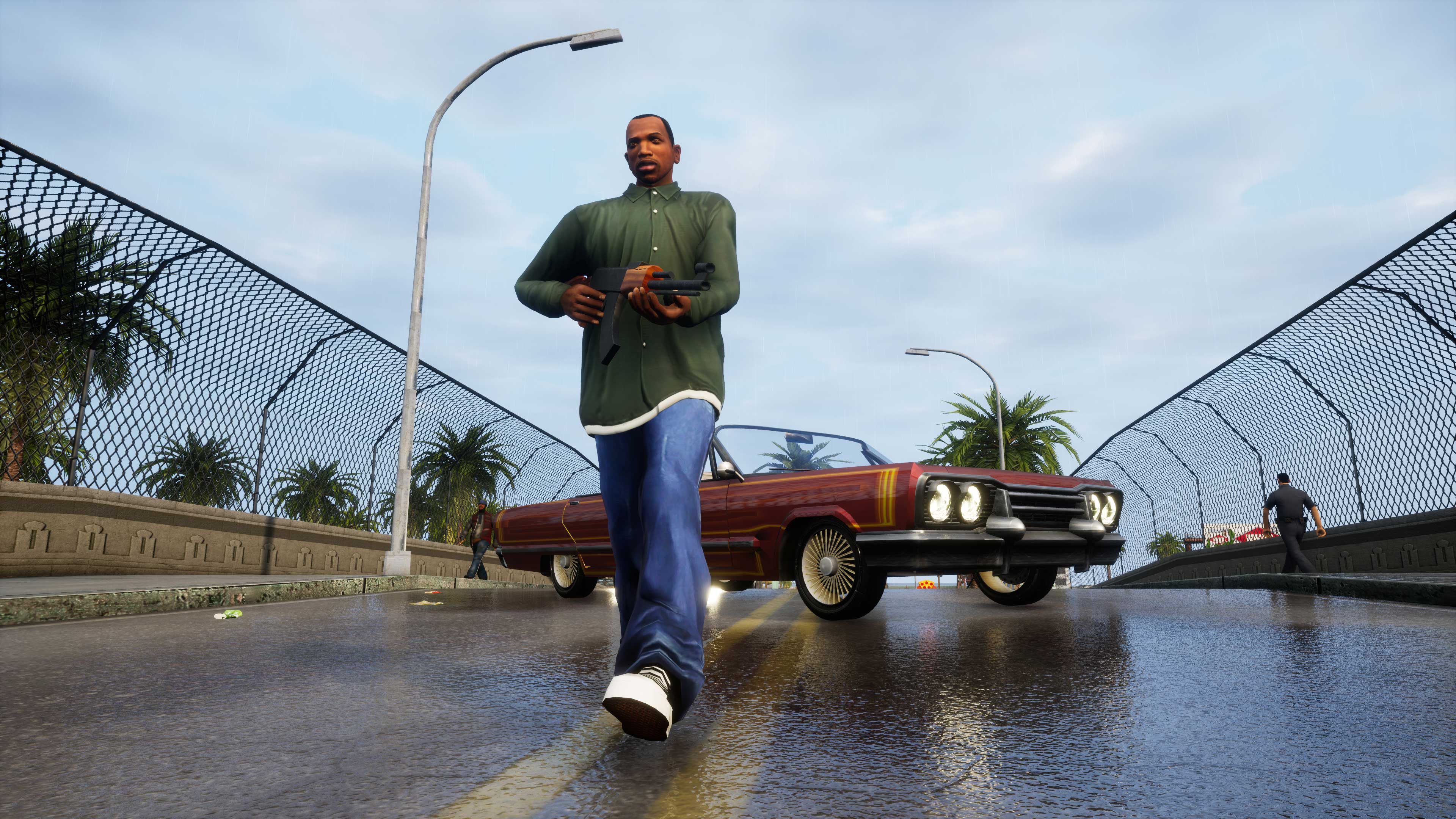
By removing its signature fog, San Andreas as it appears in the GTA Trilogy feels much smaller than you remember. In fact, if you climb to the roof of the Los Santos Tower – a hulking, 94-story monolith of limestone and granite situated in the city’s downtown neighborhood – you can see for miles. To the west, Flint County and Whetstone stretch out to the ocean, with bordering San Fierro spreading north along the coast. Tierra Robada hugs the northwestern corner of the map, with Bone County’s sandy sprawl parked between it and the bright lights of Las Venturas, the fictional state’s answer to Las Vegas, all the way to the east.
None of this was visible from the same vantage point in the original 2004 game, hidden behind a vale of white mist. As such, some disgruntled players have complained that by removing the fog which concealed the original’s draw distance limitations, the map now feels tiny – that this weather trick made the OG sandbox feel much bigger, and thus felt more credible.
I can’t argue with that, the new San Andreas can feel smaller as a result. But what I will say is that San Andreas’ reworked landscapes and environments – now more aligned with GTA 5 in appearance – are magnificent, and, actually, by being shown the diminutive scale of the map up close, I now appreciate the masterful pacing of San Andreas’ mission design more than ever before.
High and dry
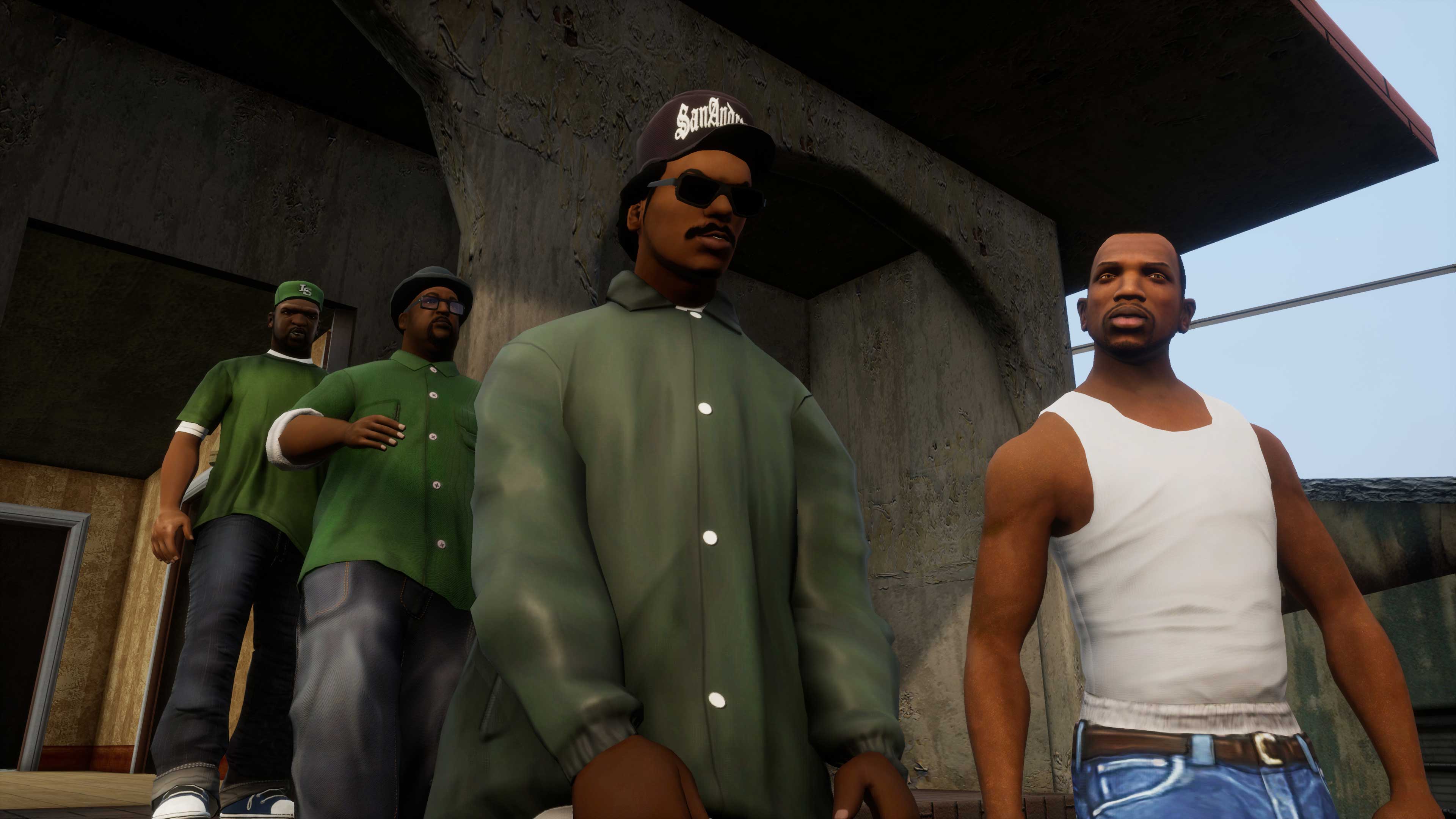
"Grove Street Games’ reworked take on the San Andreas sprawl is so gorgeous that getting lost isn’t always a bad thing."
Despite offering a hangar-full of aircrafts, not to mention a jetpack, as means of traversing its skies towards the end of its story mode, so much of San Andreas unfolds at ground level. Dogfighting among the clouds might be commonplace in GTA Online, but in the absence of an official online offshoot, the majority of San Andreas’ narrative snakes around the map beneath them – clockwise from its Grove Street starting point in urban Los Santos, to the pastoral boondocks of Flint County, the pseudo San Francisco city of San Fierro, and latterly, the Vegas-aping Las Venturas.
Between times, there are regular trips to and from previously-visited areas, but with no form of fast travel at hand, the drive from one city to the next can still feel like a journey. God help you if you wind up wrecking your car among the pine trees west of Oram Bridge. I speak from experience: that trek back to civilization on foot can be a right pain in the arse.
Even in those moments, though, Grove Street Games’ reworked take on the San Andreas sprawl is so gorgeous that getting lost isn’t always a bad thing. Chaotic launch, bugs and wonky character models aside, the way in which the developer has recaptured a world now 17 years old with both freshness and nostalgic deference is quite remarkable, and just being in Carl Johnson’s old stomping grounds again has been one of my favourite things about the GTA Trilogy so far.
Using fog and rain as a means of masking level loads and renders wasn’t uncommon in the early 2000s, with the likes of Silent Hill weaving weather effects directly into their narratives, as a sort-of developer sleight of hand. And when the game’s story unravelled around one central character, these things tended to go unnoticed. Conversely, when the Silent Hill HD Collection released on PS3 and Xbox 360 back in 2012, it featured wispy, flimsy, almost non-existent fog that transformed its outdoor scenes entirely. At the time, fans of the original games voiced their concerns.
Sign up to the GamesRadar+ Newsletter
Weekly digests, tales from the communities you love, and more
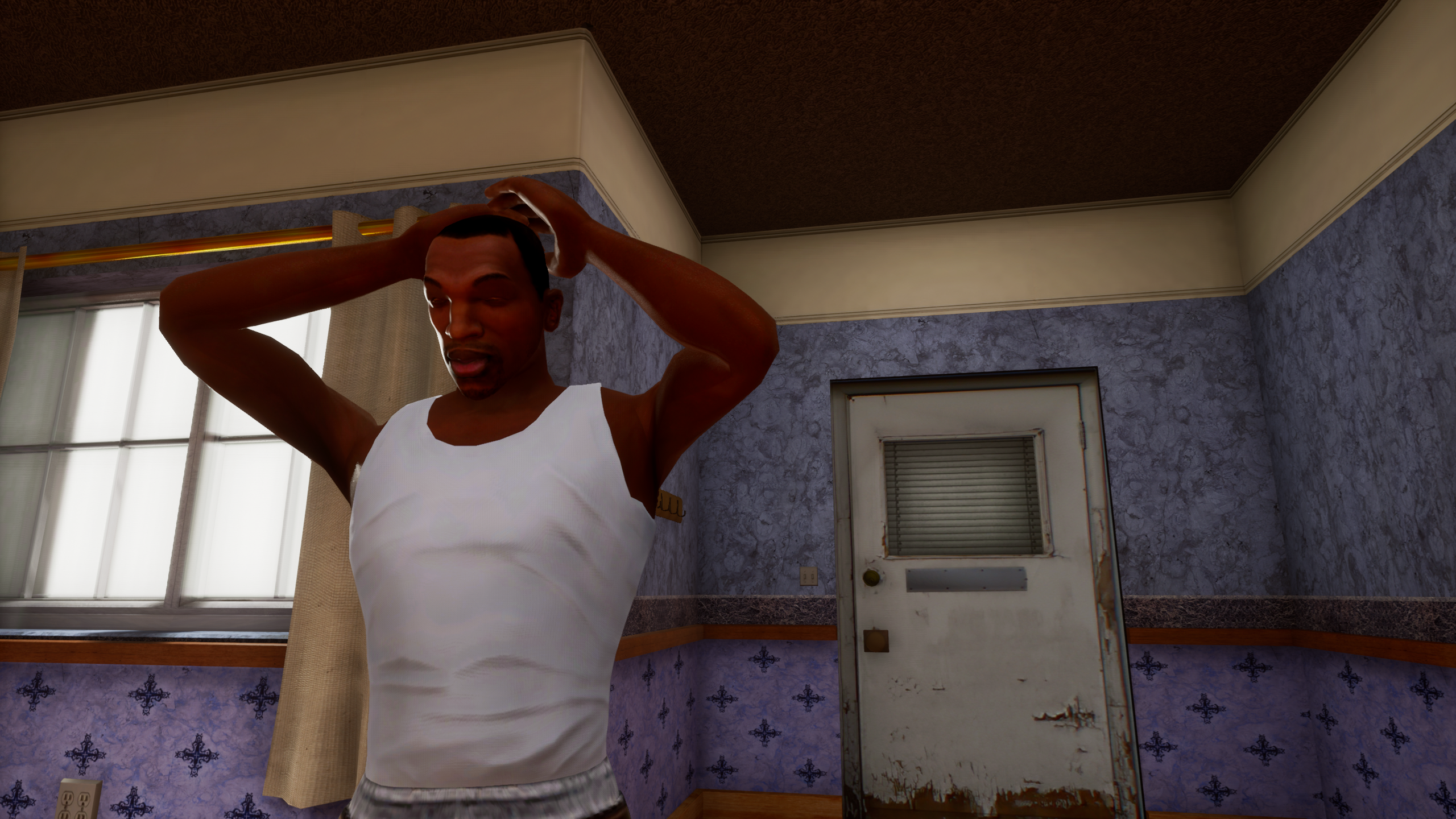
Here it’s different, because fog, obviously, isn't designed to build atmosphere or build tension. In San Andreas, early missions nudge you ever-so-slightly into new sections of the map systematically, where the action is tight and deliberate. Then you’re kicked out of the hood and dropped in the sticks. Then you’re back in a newer, bigger city, making newer, higher-brow connections in true montage-evoking, gangster movie-like style. It’s thoughtful and meticulous, and, fog or not, makes the game world – and your rise, your fall, and your rise again within it – feel all the more believable.
All of this, I think, is galvanised by the fact that many areas in the 3D Universe’s take on San Andreas (as opposed to GTA 5’s HD Universe slant, which is set in a reimagined San Andreas) are so simultaneously similar and different to GTA Online, that they trick the mind into a false sense of familiarity. There’s something so satisfying about rounding a corner, expecting to see a landmark you’ve clapped eyes on countless times in GTA Online, only to find an entirely different stretch of neighborhood littered with its own sights and points of interest. In the mid-2000s, I knew the old San Andreas map like the back of my hand, and yet feel like I’m discovering things for the first time within the new and improved GTA Trilogy environments – a notion similar to how dreams distort familiar people and places; where things are recognisable, but just a wee bit off-kilter.
GTA 6 when?
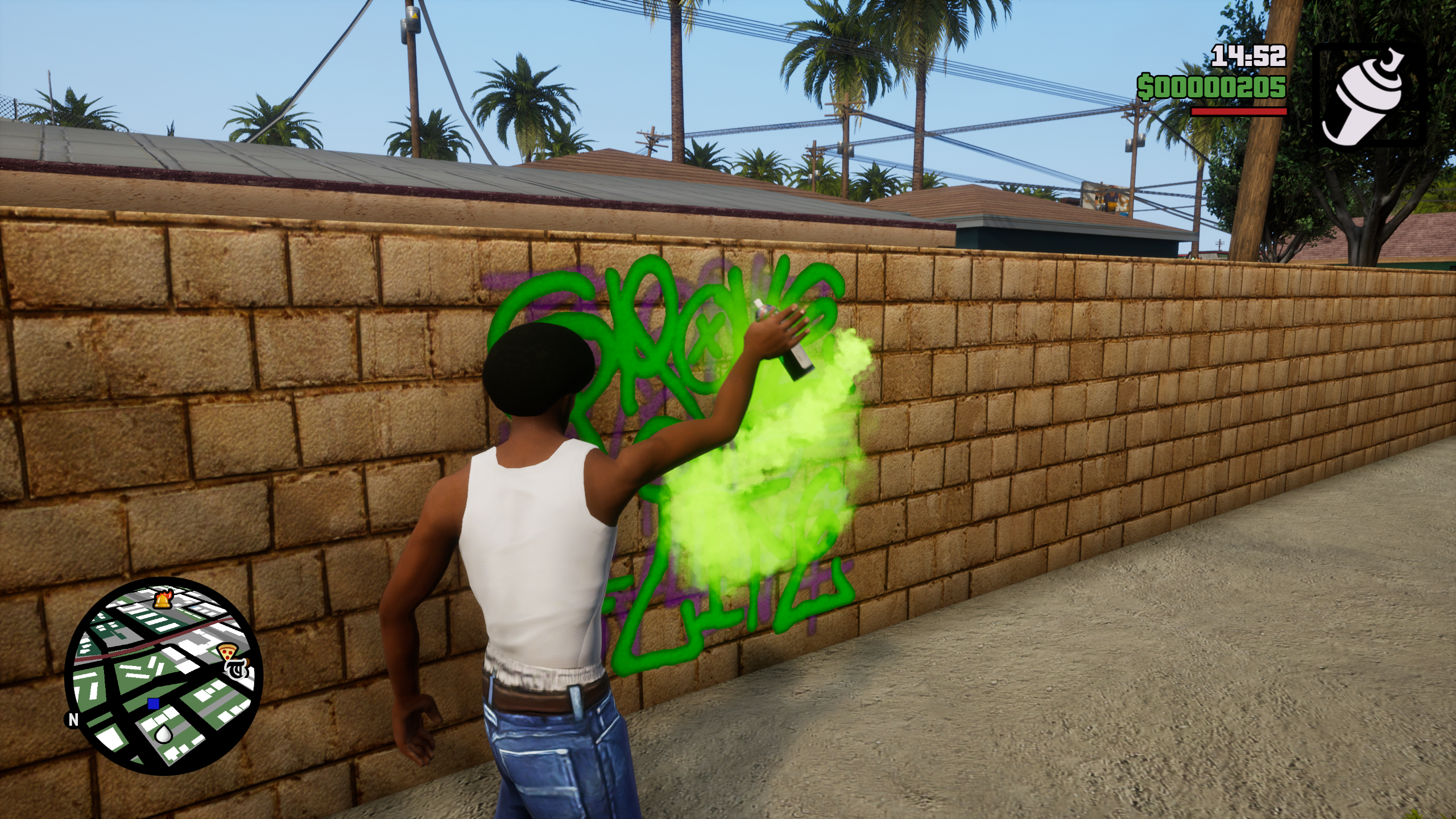
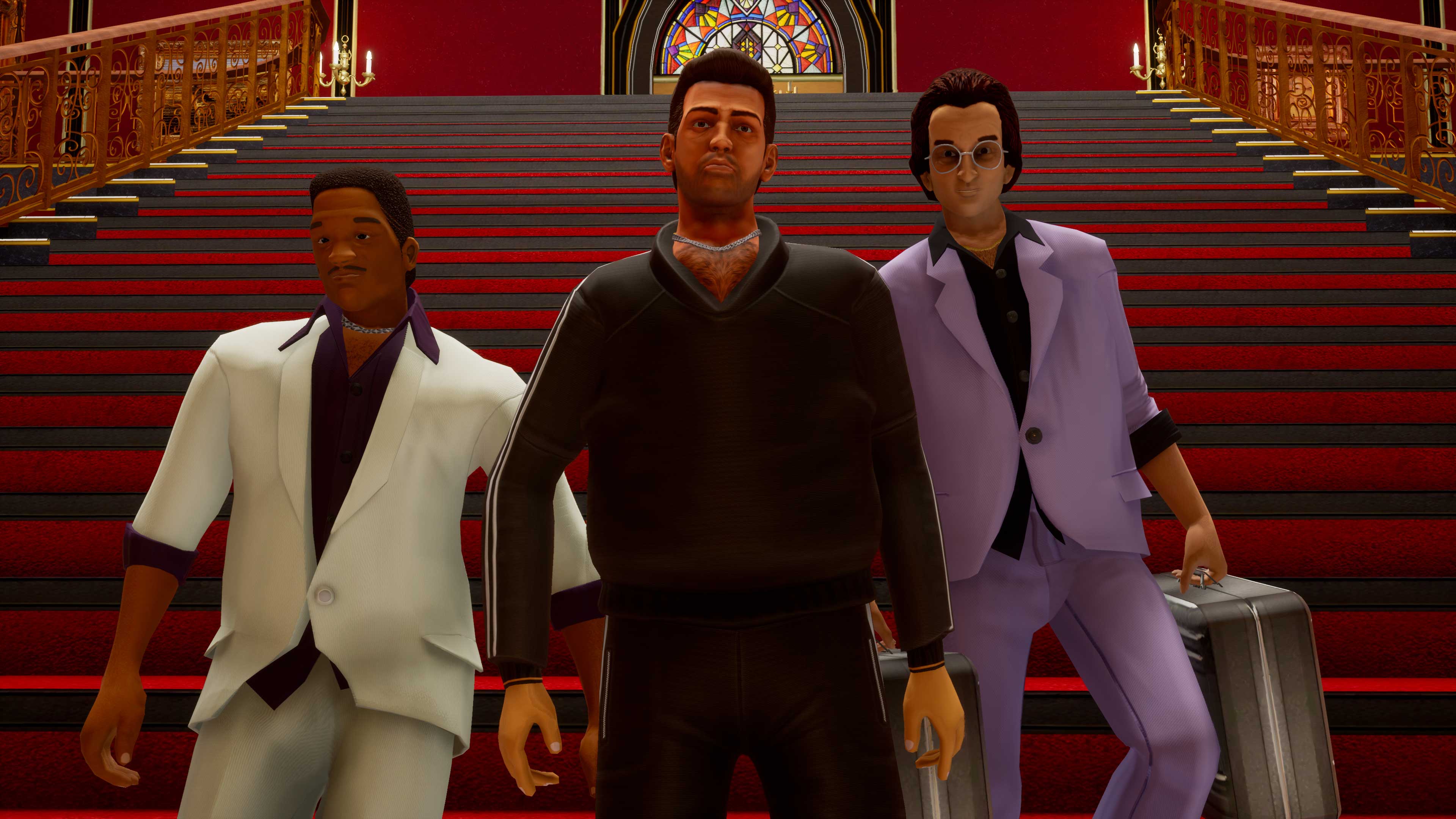
What does the Grand Theft Auto community think of the GTA Trilogy's turbulent launch?
The inevitable downside to this, then, is that when given shiny new Rockstar-crafted locations to (re)visit, I can’t help but pine for more. Who really knows what GTA 6’s timeline looks like today, but seeing San Andreas, Vice City and GTA 3’s iteration of Liberty City given a fresh lick of paint has me craving those feelings of awe, intrigue and desire to explore that only a new, uncharted sandbox can provide.
The wait between GTA 3 and Vice City was just under 12 months. The gap between Vice and San Andreas was around two years; while the distance between San Andreas and GTA 4, besides a new console generation, was around three and a half years. Five and a half years passed between GTA 4 and GTA 5 and its online counterpart GTA Online – the latter two of which have now straddled a whopping three console generations. As such, last year’s Cayo Perico update aside, we’ve been roaming around in the same map for over eight years now, with little to suggest that new horizons are anywhere near the current ones.
Which is a shame, because revisiting San Andreas has reminded me just how much there is going on in a game now pushing two-decades old. GTA 4 marked the biggest jump for the series from a technical perspective when it moved the games from the PS2 to PS3 era in 2008, and while telling a darker, grittier tale, it dropped some of its predecessor’s extra-curricular activities in the process. Of course, bowling with Roman was always (always) an option, but gone was maintaining your daily calorific intake or altering your physique at the gym. Tattoos were likewise dropped in GTA 4, but reappeared in GTA 5, and with San Andreas now looking so pretty, and with so many options to keep players occupied between bouts of tearing up its streets, the prospect of an all-consuming GTA 6 feels closer than ever before, even if in reality it’s not.
It’s certainly not as close as the fogless borders of San Andreas as viewed from the heights of the Los Santos Tower. But when everything else between those two points looks so gorgeous, I for one am not complaining.
Searching for San An's collectibles? Write our GTA San Andreas Oysters locations across Los Santos, San Fierro, and Las Venturas guide into your map.

Joe Donnelly is a sports editor from Glasgow and former features editor at GamesRadar+. A mental health advocate, Joe has written about video games and mental health for The Guardian, New Statesman, VICE, PC Gamer and many more, and believes the interactive nature of video games makes them uniquely placed to educate and inform. His book Checkpoint considers the complex intersections of video games and mental health, and was shortlisted for Scotland's National Book of the Year for non-fiction in 2021. As familiar with the streets of Los Santos as he is the west of Scotland, Joe can often be found living his best and worst lives in GTA Online and its PC role-playing scene.


